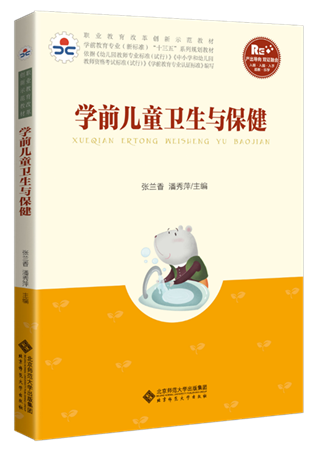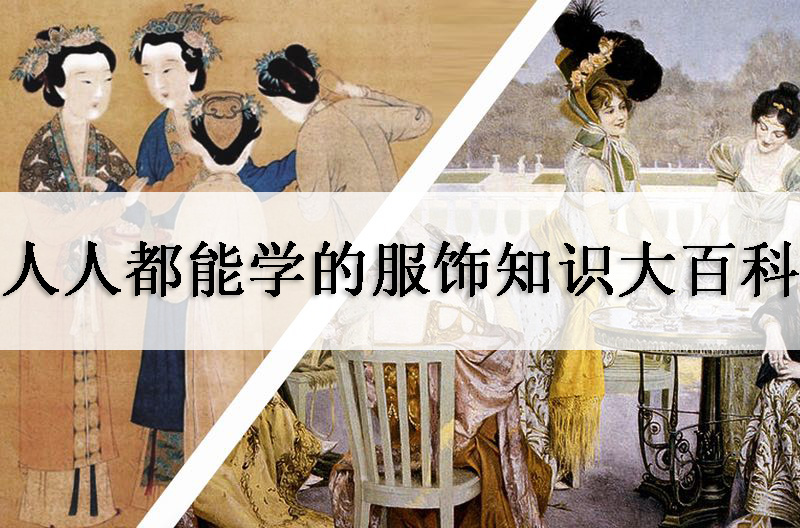
当前课程知识点:Diagnostics in Chinese Medicine > Week 11 Diagnosis methods:Listening and smelling examination > 9.2.5 Abnormal sounds of the stomach and intestines > 9.2.5 Abnormal sounds of the stomach and intestines
返回《Diagnostics in Chinese Medicine》慕课在线视频课程列表
返回《Diagnostics in Chinese Medicine》慕课在线视频列表
同学们好
下面我们来学习胃肠的异常声音
胃肠的异常声音 主要有呕吐 呃逆
嗳气和肠鸣四种声音
首先我们来学习 呕吐的声音
呕吐 是指饮食物 痰涎从胃中上涌
由口吐出的症状
其中 有物有声为呕吐
有物无声为吐
有声无物为干呕
呕吐的病变部位是在胃
任何寒热虚实的原因 只要引起胃的病变
都可能会引起胃气上逆 而出现呕吐
因此 我们可以根据呕吐声音的强弱
吐势的缓急以及呕吐物等
来判断病证的寒热虚实
比如 吐势徐缓 声音微弱
吐物比较清稀 通常见于虚寒证
它是由脾胃阳虚 脾失健运
胃失和降 胃气上逆所导致的
吐势较猛 声音壮厉
吐出粘痰黄水 或者酸腐苦水
通常是属于实热证
它是由热伤胃津 胃失濡养
胃气上逆所导致的病证
暴病的呕吐 通常属于实证
久病的呕吐 通常属于虚证
呕吐酸味食糜
多是因暴饮暴食
或过食肥甘厚味
饮食积滞于胃脘 胃气上逆所导致的病证
共同进餐 都发生呕吐 多因食物中毒所致
朝食暮吐 暮食朝吐为胃反
多见于脾胃阳虚证
口干欲饮 水入即吐 称为水逆
因为饮邪停胃 胃气上逆所导致的病证
第二种胃肠异常声音称为呃逆
呃逆 是指胃气上逆
从咽喉发出的一种不自主的冲击声
声短气频 呃呃作响的一种症状
俗称打嗝或者是打呃
呃逆的定位 同样也是在胃
任何寒热虚实的原因 只要引起胃的病变
都可以引起胃气上逆而出现呃逆
所以可以通过呃逆的声响 来判断疾病的寒热虚实
比如 呃声频频 高亢而短
声音有力多为实证 热证
呃声低沉 声弱无力 多为虚证和寒证
新病呃逆 声音有力
多属于实证
通常是由于寒邪或热邪
客于胃所导致的病证
久病 重病 呃逆不止 声低气怯无力
多属于虚证
多为胃气衰败的危重证候
但是我们也要注意 在生活中
突然呃逆
呃声不高不低 没有其他的病史或兼症
多因为饮食刺激
或偶感风寒引起的短暂呃逆
一般不作为病变状态
可以通过打喷嚏(取嚏)
或者屏住呼吸(屏息)
或者通过惊吓(大骇)等等方法来缓解
第三种胃肠异常声音 称为嗳气
嗳气 是指胃中气体上出于咽喉而发出的声响
其声长而缓的症状
呃逆称为打嗝
嗳气 称为打饱嗝
呃逆和嗳气的主要区别是
嗳气 是胃中之气上冲咽喉而出
而发出声音长而缓
呃逆 是喉间气逆而发出的
声短而频的声音
嗳气的病变部位 同样也是在胃
任何引起胃的病变都可以导致胃气上逆
可以引起嗳气
所以通过听嗳气的声音 以及伴随症状
可以判断疾病的寒热虚实
比如 嗳气酸腐 兼有脘腹胀满者
通常是宿食积滞引起的实证
嗳气随情绪的变化而变化
声响而频 嗳气后腹胀减轻
这是肝气犯胃的一种病症
这种嗳气 在临床上常见于
精神紧张 焦虑 生活或工作压力大的病人
这种嗳气在生活中非常常见
另外 嗳气低沉断续 无酸腐气味
兼见有纳呆少食等等症状是胃虚气逆的表现
嗳气频作 无酸腐气味
同时兼有脘腹冷痛
见于外感寒邪客胃的实寒证
或胃阳亏虚的虚寒证
需要注意的是 当吃饱饭以后
或喝了汽水之后 偶尔出现嗳气
没有其他的兼症 则不属于病变状态
不需要治疗
第四种胃肠道声音 就是肠鸣音
肠鸣音 是指气体或液体
通过肠道时而产生的一种气过水声
或沸泡音
正常情况下
肠鸣音声低弱而和缓
一般来讲
大约每分钟四到五次
肠鸣音增多或稀少 都是不正常的
我们首先来看一看肠鸣增多
肠鸣增多 是指肠鸣音每分钟超过十次以上
如果肠鸣增多 伴有
如囊裹水 辘辘有声者称为振水声
若是饮水后出现 多属正常
若非饮水而常见此声
多为水饮停胃的表现
如果肠鸣因饥饿寒冷而明显
称为饥肠辘辘
这种肠鸣 得温得食则减
饥饿寒冷则加重
为中气不足 胃肠虚寒的表现
肠鸣音高亢而频急
脘腹痞满 大便泄泻
多为感受风寒湿邪
胃肠气机紊乱所致
肠鸣腹痛 泻后痛安
伴胸胁满闷不舒者
为肝脾不调所致
下面我们来看看肠鸣稀少
肠鸣音稀少 是指肠鸣音每三到五分钟才有一次
肠鸣音稀少 主要是肠道传导功能障碍
可因湿热蕴结肠胃
肠道气机受阻
或肝脾不调 气机郁滞
肠道腑气欠通
或者是
脾肺气虚 肠道虚弱 传导无力
或阴寒凝滞 气机闭阻
肠道不通所致
肠鸣音消失 腹胀满痛者
多属于胃肠气滞的重症
可见于肠痹或肠结等病
通常需要外科紧急处理
以上是胃肠的异常声音
包括呕吐 呃逆 嗳气和肠鸣音等等
其中呕吐 嗳气 呃逆
均与胃气上逆有关
三个症状可以同时出现
也可以单独出现
本节课就上到这里
-Introductory remark
--QQ groups、WeChat public account
-Introduction
--【Discussion 1】Why do you want to take this course?
-Unit test for Introduction
-1.1 Yin-yang theory
-1.2 The theory of five elements
--1.2.1 The theory of five elements
--1.2.2 Application of the theory of five elements
-Frequently Asked Questions
-Unit test for week 1
-2.0 Outline
--【Discussion 2】How to understand the holistic view centered on the Zang Fu theory?
-2.1 Liver
--【Discussion 3】Why is repose more important than vigorous exercise in recuperation for patients with
-2.2 Heart
-2.3 Spleen
-2.4 Lung
--2.4 Lung
-2.5 Kidney
-2.6 Six fu organs
-Frequently Asked Questions
-Unit test for week 2
-3.1 Qi
--3.1 Qi
-3.2 Blood
-3.3 Body fluid
-3.4 The relationship of qi, blood and body fluid
--3.4 The relationship of qi, blood and body fluid
--【Discussion 4】A discussion about the theory of qi, blood and body fluid
-Frequently Asked Questions
-Unit test for week 3
-4.0 Outline
-4.1 Six exogenous factors
--4.1.2 Nature and pathogenicity of wind and cold
--4.1.3 Nature and pathogenicity of summer heat and damp
--4.1.4 Nature and pathogenicity of dryness and fire
-4.2 Etiology of visceral impairment
--4.2 Etiology of visceral impairment
-Frequently Asked Questions
-Unit test for week 4
-5.0 Outline of inquiry
--【Discussion 5】If you were a patient, how would you describe your condition to your doctor first?
-5.1 Inquiry of Chills and fever
--5.1.1 Chills and fever(Aversion to cold with fever)
--5.1.2 Chills and fever(Chills without fever)
--5.1.3 Chills and fever(Fever without chills)
--5.1.4 Chills and fever(Alternative chills and fever)
--【Discussion 6】How to understand "if you have clinical manifestations of cold, that is exterior syndr
-5.2 Inquiry of perspiration
-Frequently Asked Questions
-Unit test for week 5
-5.3 Inquiring of pain
--【Discussion 7】How to understand "stagnation leading to pain and innourish leading to pain"?
-5.4 Inquiring of head, body, thorax and abdomen
--5.4 Inquiring of head, body, thorax and abdomen
-5.5 Inquiring of ears and eyes
--5.5 Inquiring of ears and eyes
-5.6 Inquiring of sleep
-5.7 Inquiring of food and drink, appetite and taste
--5.7 Inquiring of food and drink, appetite and taste
-5.8 Inquiring of defecation and urination
--5.8.1 Inquiring of defecation
--5.8.2 Inquiring of urination
-5.9 Inquiring of infantile and women's disease
--5.9 Inquiring of infantile and women's disease
-Unit test for week 6
-6.0 Outline of Observation
--【Discussion 8】Please use the whole body inspection (including the expression, complexion and figure)
-6.1.1 Observation of vitality
--6.1.1 Observation of vitality
-6.1.2 Observation of the color
--6.1.2.1 The content, principles of inspection of the color
--6.1.2.2 Indication of diseases by five colors
--【Discussion 9】How do you understand the normal complexion of a normal people?
-6.1.3 Observation of the appearance
--6.1.3 Observation of the appearance
-6.1.4 Observation of figure and posture
--6.1.4 Observation of figure and posture
-Unit test for week 7
-6.2.1 Observation of head and face
--6.2.1 Observation of head and face
-6.2.2 Observation of five sensory organs
--6.2.2.1Observation of five sensory organs(observation of eyes,ears,nose)
--6.2.2.2Observation of five sensory organs(observation of lips,teeth and gums,throat)
-6.2.3 Observation of body
-6.2.4 Observation of limbs
-6.2.5 Observation of two lower orifices
--6.2.5 Observation of two lower orifices
-6.2.6 Observation of skin
-6.3 Observation of excreta
-6.4 Observation of infantile fingerprints
--6.4 Observation of infantile fingerprints
-Frequently Asked Questions
-Unit test for week 8
-7.1 Outline of tongue inspection
--7.1.1 The morphology and structure of the tongue
--7.1.2 The principle of tongue examination
--7.1.3 The method and precaution of tongue examination
--7.1.4 The content of tongue examination, normal tongue
-7.2 Inspection of tongue structure
--7.2.1 Observe the color of tongue
--7.2.2 Observe the shape of tongue
--7.2.3 Observe the states of tongue
--7.2.4 Observation of sublingual vein
-7.3 Observation of tongue coating
--7.3.1 Observation of coating texture
--7.3.2 Observe the color of coating
-7.4 Clinical significance of tongue diagnosis
--7.4 Clinical significance of tongue diagnosis
--【Discussion 10】Why to observe the tongue can be used to diagnose disease?
-Unit test for week 9
-8.1 The principle of pulse examination
--8.1 The principle of pulse examination
-8.2 The regions and methods of pulse examination
--8.2 The regions and methods of pulse examination
-8.3 The elements of pulse examination and the normal pulse
--8.3 The elements of pulse examination and the normal pulse
-8.4 Characteristics and significance of pulse
--8.4.1 Superficial pulse, deep pulse, slow pulse, rapid pulse
--8.4.2 Surging pulse, thin pulse, long pulse, short pulse
--8.4.3 Feeble pulse, forceful pulse, slippery pulse, uneven
--8.4.4 Taut pulse, tense pulse,soggy pulse, moderate pulse
--8.4.5 Knotted, slow-regular-intermittent, irregularly abrupt
-8.5 Similar pulse, concurrent pulse, pulse indicating deterioration of visceral qi۞
--8.5 Similar pulse, concurrent pulse, pulse indicating deterioration of visceral qi۞
--【Discussion 11】Why is complex pulse more common than single-factor pulse?
-8.6 Women’s pulse, children’s pulse
--8.6 Women’s pulse, children’s pulse
-8.7 The clinical significance of pulse diagnosis
--8.7 The clinical significance of pulse diagnosis
-Unit test for week 10
-9.1 Listening
-9.2.1 Abnormal sound
-9.2.2 Abnormal language
-9.2.3 Respiratory abnormality
--9.2.3 Respiratory abnormality
-9.2.4 Cough
--【Discussion 12】How to observe the patient's cough sound and sputum changes to determine whether the
-9.2.5 Abnormal sounds of the stomach and intestines
--9.2.5 Abnormal sounds of the stomach and intestines
-9.3 Smelling
--【Discussion 13】How to diagnose by smelling?
-Unit test for week 11
-10.1 The method, meaning and precautions of palpation
--10.1 The method, meaning and precautions of palpation
-10.2 Contents of palpation
--10.2.1 Palpating chest and hypochondrium
--10.2.2 Palpating stomach and abdomen
--10.2.4 Palpating hands and feet, palpating acupoints
--【Discussion 14】How to determine whether external or internal injuries?
-Unit test for week 12
-Conclusion
-Final Exam
--Final Exam

